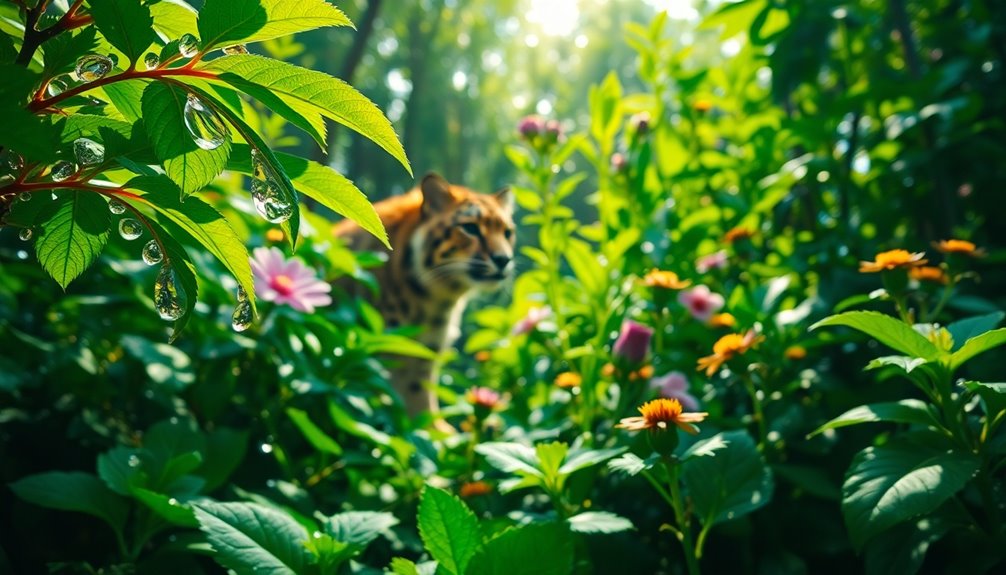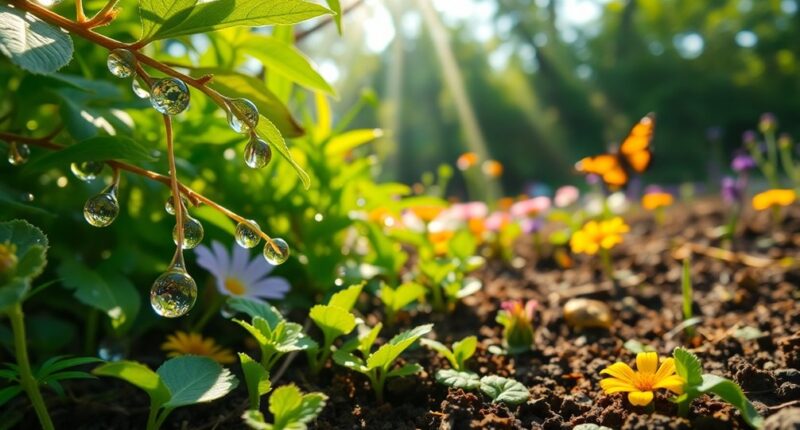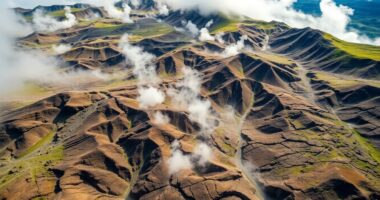Biodiversity is dropping dramatically, with wildlife populations declining by 73% since 1970. However, conservation efforts are making a difference. Habitat protection, captive breeding, and reintroducing species have all led to positive outcomes. Community-driven initiatives are also helping species thrive. While challenges remain, these targeted actions show promise for reviving endangered species and restoring ecosystems. To understand how these strategies are changing the future of biodiversity, you'll want to explore more about ongoing efforts and successes.
Key Takeaways
- Global biodiversity is declining, with wildlife populations dropping by 73% since 1970, highlighting the urgency for conservation efforts.
- Successful conservation initiatives, such as habitat protection and captive breeding, have led to the revival of species like the Iberian lynx.
- International agreements, such as whaling moratoriums, demonstrate effective global cooperation in wildlife recovery.
- Community-led conservation projects, like those in Papua New Guinea, show the importance of local engagement in protecting endangered species.
- Advanced technologies, including satellite monitoring and AI, are enhancing conservation strategies to address ongoing biodiversity loss.

Biodiversity is crucial for maintaining the health of our planet, as it supports ecosystems that provide essential services like pollination and disease regulation. However, you may be alarmed to learn that monitored vertebrate wildlife populations have plummeted by an average of 73% since 1970. Regions like Latin America and the Caribbean have seen a staggering 95% decline, with Africa and Asia-Pacific not far behind. Freshwater species are particularly hard-hit, experiencing an 85% decline globally. This biodiversity crisis stems from habitat loss, overharvesting, invasive species, disease, and climate change. 73% decline in average size of monitored wildlife populations highlights the urgent need for conservation efforts.
Biodiversity is vital for our planet's health, yet vertebrate wildlife populations have drastically declined by 73% since 1970.
Despite these alarming statistics, there are success stories in conservation that show hope. Targeted efforts like habitat protection, captive breeding, and species reintroductions have revived populations of creatures such as the Iberian lynx and kākāpō. International agreements, including whaling moratoriums, have played a pivotal role in helping species like humpback whales recover.
You should also recognize the importance of community-led conservation initiatives, like those in Papua New Guinea, where local involvement has made a significant difference for tree kangaroos.
Still, challenges remain. Approximately 28% of assessed species face the threat of extinction, driven mainly by human activities. Improving ecological connectivity is vital since isolated habitats can hinder species migration. While many protected areas exist, numerous species still find themselves endangered within these zones.
Preventative conservation strategies are often more cost-effective than emergency interventions. By collaborating with local communities and fostering global cooperation, we can address biodiversity loss more effectively. Technological advancements, such as satellite monitoring and artificial intelligence, can enhance these efforts, but they require increased funding.
Ultimately, wildlife serves essential roles in delivering ecosystem services, material benefits, and cultural identity. As you consider the benefits of wildlife, it's clear that taking action to conserve biodiversity isn't just an environmental necessity; it's a fundamental aspect of our shared future.
Frequently Asked Questions
What Are the Main Causes of Biodiversity Loss Today?
You'll find that the main causes of biodiversity loss today include habitat destruction from deforestation, agricultural expansion, and urbanization.
Overexploitation through overfishing and hunting further threatens species.
Climate change and pollution disrupt ecosystems, while invasive species outcompete native organisms.
These factors combined create significant pressure on wildlife, leading to declines in populations and the overall health of ecosystems.
Protecting biodiversity is crucial for maintaining balance in our environment.
How Can Individuals Contribute to Conservation Efforts?
You can contribute to conservation efforts in various ways.
Start by choosing sustainable and cruelty-free products to reduce demand for harmful practices.
Get involved in local conservation initiatives, whether through donations or volunteering.
Raise awareness by sharing information on social media and participating in clean-up events.
Engage with local officials about conservation policies, and consider planting native species to support local wildlife.
Every small action can make a significant difference in protecting our planet.
Are There Any Successful Species Recovery Stories?
Think of a phoenix rising from the ashes; that's what successful species recovery looks like.
You'll find inspiring stories like the peregrine falcon, which soared back from endangered status, and the humpback whale, whose numbers flourished after whaling bans.
The American alligator also made a remarkable comeback.
These stories show how dedicated conservation efforts, habitat protection, and community involvement can breathe new life into endangered species, proving hope is always alive.
What Role Do Governments Play in Conservation?
Governments play a crucial role in conservation by enforcing laws, managing habitats, and collaborating with local communities.
You'll find federal agencies like the U.S. Fish and Wildlife Service actively working to protect endangered species and restore their habitats. They also provide public education and create opportunities for community engagement.
How Does Climate Change Impact Endangered Species?
Imagine a ship adrift in a stormy sea, struggling against relentless waves; that's how climate change affects endangered species.
Rising temperatures and shifting habitats force creatures to adapt or perish. Polar bears lose their icy homes, while coral reefs turn ghostly white.
Altered food sources and disrupted breeding cycles further threaten survival. As the tempest rages on, these species fight for their lives, but without help, many may vanish from our world.
Conclusion
So, while biodiversity takes a nosedive, we're patting ourselves on the back for saving a few endangered species. Isn't it charming how we celebrate the small victories while the planet's going to hell in a handbasket? Sure, you can rescue a panda, but what's the point if the forest it lives in is shrinking faster than your attention span? Let's keep pretending we're heroes in this tragic comedy, shall we? After all, who needs a thriving ecosystem when you've got a cute animal photo?









